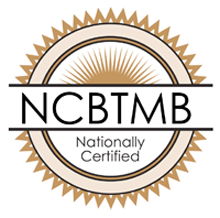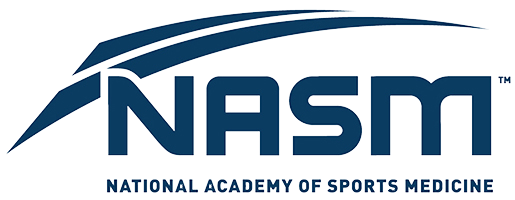
Navigating the healthcare field reveals a variety of roles essential to patient care, among which the medical assistant stands out due to the versatility and critical support they provide. If you’ve wondered exactly what a medical assistant does, you’re not alone. This question is pivotal, not only to those considering a career in medical assisting but also to patients who benefit from their care.
Understanding the scope of this role is crucial, as medical assistants are integral to the functionality of healthcare teams, ensuring that operations run smoothly and efficiently. Their duties bridge the administrative and clinical, making their contribution unique and indispensable.
Whether you are considering a career in medical assisting or are simply curious about the role, this guide provides comprehensive insights into the versatile and vital world of medical assistants.
Overview of Medical Assistant Role
The role of a medical assistant is multifaceted and vital in healthcare settings. As the backbone of medical facilities, they ensure smooth operations and deliver top-notch patient care. Their responsibilities bridge administrative and clinical tasks, making them indispensable members of the healthcare team.
Definition and Importance
Medical assistants work under the supervision of physicians in clinics, medical offices, and hospitals. They juggle a diverse array of responsibilities, all tied to the singular goal of ensuring patients receive optimal care and healthcare providers can function effectively. From scheduling appointments and maintaining accurate health records to taking vital signs, administering medications, and assisting with procedures, their versatility is unmatched.
The significance of medical assistants cannot be overstated. They are the frontline, interacting with patients, providing education, and ensuring their comfort throughout the healthcare journey. Their presence allows doctors and nurses to concentrate on their core duties, ultimately improving patient outcomes and lowering costs.
Differences from Other Medical Staff
While medical assistants share some similarities with nurses, such as caring for patients and dealing with bodily fluids, there are key distinctions:
- Licensing: Nurses are required to hold a nursing license and undergo additional training, while medical assistants can begin work without extensive training or experience.
- Scope of Practice: Nurses have a broader scope of practice, performing more complex tasks and assuming greater responsibility than medical assistants.
- Pay: Nurses typically earn higher salaries compared to medical assistants.
- Schedules: Most nurses work three 12-hour shifts per week, including nights and weekends, whereas medical assistants generally work regular business hours.
Despite these differences, both roles are crucial in the healthcare system, with medical assistants playing a unique and indispensable part in patient care and operational efficiency.
Administrative Duties of a Medical Assistant
As a medical assistant, you play a crucial role in managing the administrative tasks that keep healthcare facilities running smoothly. Your responsibilities extend beyond just clinical duties, ensuring efficient operations and excellent patient care. Here are some key administrative duties you’ll undertake:
Scheduling and Managing Appointments
One of your primary tasks involves managing the appointment calendar. You’ll schedule patient visits, follow-ups, and consultations, ensuring optimal time management for healthcare providers. Additionally, you’ll greet patients, verify their personal and insurance information, and direct them to the appropriate areas.
Updating and Managing Medical Records
Maintaining accurate and up-to-date medical records is vital for effective communication and continuity of care. You’ll be responsible for updating patient demographic information, handling record requests, and ensuring the confidentiality of sensitive medical data. Proper record-keeping is essential for assessing and meeting each patient’s needs, as well as protecting the practice from potential liability or fraud claims.
Handling Insurance and Billing
In today’s healthcare landscape, navigating insurance and billing processes is a critical aspect of your role. You’ll verify patients’ insurance coverage and eligibility, obtain pre-authorizations for procedures or referrals, and ensure that claims are submitted correctly and promptly to insurance providers. Additionally, you’ll assist with medical billing, coding procedures, and processing payments to facilitate timely reimbursement for the healthcare facility.
By efficiently managing these administrative tasks, you contribute to the smooth operation of the healthcare facility, allowing physicians and other medical professionals to focus on delivering high-quality patient care.
Clinical Responsibilities of a Medical Assistant
As a medical assistant, your clinical responsibilities are crucial in providing quality patient care. You play a vital role in assisting healthcare providers and ensuring efficient operations within medical facilities. Here are some key clinical duties you’ll undertake:
Assisting with Exams and Procedures
You’ll actively participate in patient examinations and procedures under the supervision of physicians or other licensed healthcare professionals. This may involve:
- Preparing examination rooms and ensuring necessary equipment is readily available.
- Assisting with routine examinations, such as gynecological exams, eye and ear irrigation, newborn screening tests, and pediatric exams.
- Educating patients on examination procedures and self-care practices, like teaching women how to perform self-breast examinations.
- Assisting with minor office surgeries, biopsies, incision and drainage procedures, colposcopies, and emergency medical procedures.
While you won’t interpret results or prescribe treatments, your support during these procedures is invaluable for ensuring smooth operations and patient comfort.
Collecting Specimens
Collecting and processing laboratory specimens is another critical aspect of your role. You’ll be responsible for:
- Collecting non-invasive specimens, such as urine, sputum, semen, and stool samples.
- Performing basic laboratory tests, like electrocardiograms (EKGs), urine tests for pregnancy, and blood glucose measurements.
- Drawing blood samples through venipuncture or finger sticks, following proper procedures and patient safety protocols.
- Ensuring accurate labeling, handling, and transportation of specimens to maintain integrity for precise test results.
Your attention to detail and adherence to protocols are essential for providing accurate diagnostic information to healthcare providers.
Administering Medication
Under the direct supervision of a licensed physician or other authorized healthcare professional, you may be responsible for administering medications to patients. This includes:
- Verifying the correct medication and dosage as prescribed by the healthcare provider.
- Administering oral, sublingual, topical, vaginal, or rectal medications.
- Providing injections, such as intramuscular, subcutaneous, and intradermal injections, including vaccinations and immunizations.
- Educating patients on proper medication usage, potential side effects, and self-administration techniques when necessary.
Strict adherence to medication administration protocols and constant communication with supervising healthcare providers are paramount to ensure patient safety and effective treatment.
Remember, as a medical assistant, your clinical responsibilities are diverse and vital in supporting healthcare providers and ensuring optimal patient care. By performing these duties with professionalism, attention to detail, and a commitment to patient well-being, you contribute significantly to the overall quality of healthcare services.
Work Environments and Opportunities
As a medical assistant, you have the opportunity to work in diverse healthcare settings, each offering unique experiences and responsibilities. The two primary work environments are clinics and private practices, as well as hospitals and outpatient facilities.
Clinics and Private Practices
More than half of all medical assistants work in doctors’ offices or clinics. These settings typically have recurring patients, allowing you to build long-term relationships within the community. In private practices, you may be responsible for both administrative and clinical duties, providing a well-rounded experience.
While clinics are smaller than hospitals, your role is equally vital to their operations. You’ll be at the forefront of patient interaction, scheduling appointments, handling supply inventory, greeting patients, and occasionally assisting physicians and nurses with treatments.
Additionally, there are specialized clinics catering to specific medical conditions, such as express clinics, chiropractic clinics, and allergy clinics. These facilities offer entry-level medical assistants the opportunity to gain experience in various medical settings, making them highly attractive to future employers.
Hospitals and Outpatient Facilities
Hospitals are the second-largest employer of medical assistants in the United States. These fast-paced environments require you to work at various times of the day, as hospitals often operate around the clock. Your duties may alternate between administrative and clinical tasks, and the ability to work under stress will be advantageous.
In hospitals, you’ll play a crucial role in bridging the gap between patients and healthcare professionals. You’ll be responsible for scheduling appointments, maintaining accurate medical records, updating treatments, assisting in minor procedures, directing patients within the hospital, caring for long-term patients, and providing patient information to doctors and nurses.
Outpatient care centers offer services that do not require an overnight stay, such as minor surgeries, lab tests, and psychiatric outpatient care. As a medical assistant in these facilities, you may be responsible for both administrative and clinical duties. While outpatient clinics are often open on weekends, they tend to be less stressful than hospitals, where patient care is primarily urgent.
Many hospitals and outpatient facilities are major employers in their communities, frequently providing competitive pay and benefits. These settings offer diverse opportunities for medical assistants to contribute to patient care and gain valuable experience in a variety of healthcare environments.
Conclusion
Throughout this article, we have learned about the role of a medical assistant, highlighting their essential contributions both behind the scenes in administrative duties and on the front lines of patient care. From managing schedules and medical records to assisting with medical procedures and patient care, the role of a medical assistant is both varied and critical. It’s clear that medical assistants are not just support staff but key players in ensuring the efficiency of healthcare operations and the well-being of patients.
The journey to becoming a medical assistant, the scope of their responsibilities, and the environments in which they work underscore the pivotal role they play in the healthcare industry. As we look towards the future, the demand for skilled, compassionate, and dedicated medical assistants is only set to grow.
Whether you are considering a career in medical assisting or are simply seeking to understand the contributions of these vital professionals, it’s evident that medical assistants are indispensable to our healthcare system, providing essential services that benefit both patients and healthcare providers alike.
FAQs
What tasks are typically assigned to a medical assistant?
Medical assistants play a crucial role in supporting the healthcare team. Their responsibilities can vary but generally include collecting patient medical histories, recording vital signs, and assisting with minor procedures in a clinical setting.
What are some key duties of a medical assistant when supporting healthcare providers?
Medical assistants are responsible for several important tasks including taking medical histories, explaining treatment procedures to patients, preparing patients for examinations, and assisting physicians during these examinations.
Can you describe the job role of a medical assistant?
The role of a medical assistant involves a range of clinical duties such as helping doctors with patient examinations, monitoring patients’ vital signs, drawing blood for basic lab tests, and administering medications and injections under the supervision of a physician.
What are the primary responsibilities of a medical assistant?
The top three responsibilities of a medical assistant include assisting the doctor during patient examinations, measuring and recording vital signs, and explaining medical procedures to patients.




